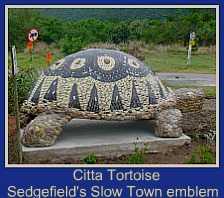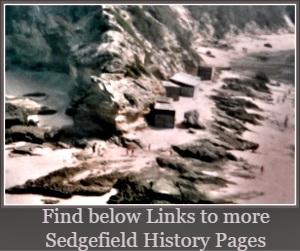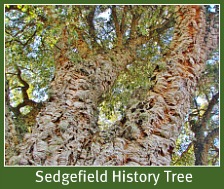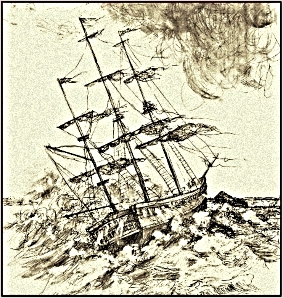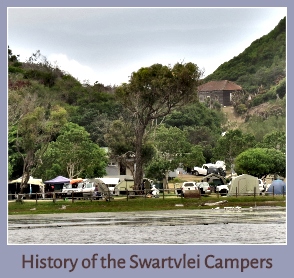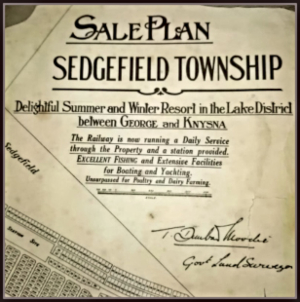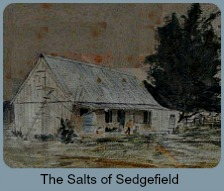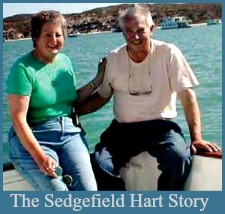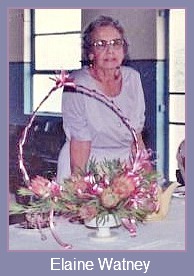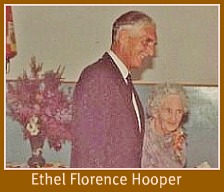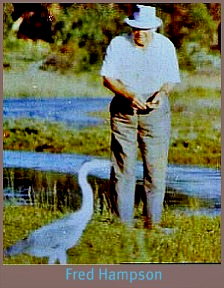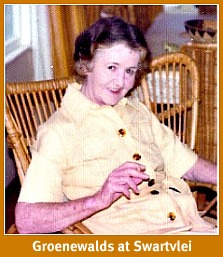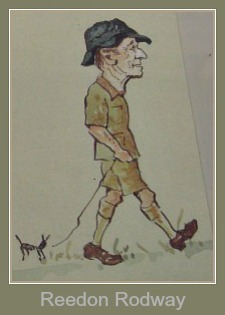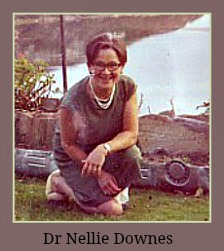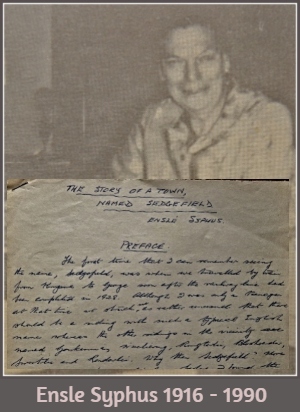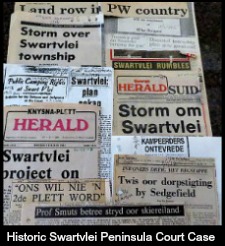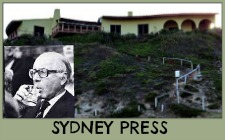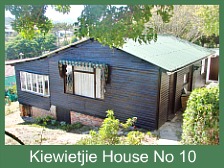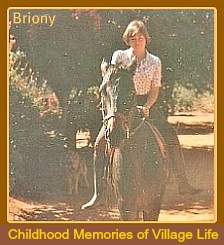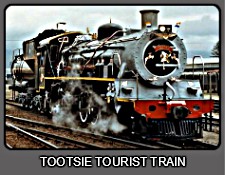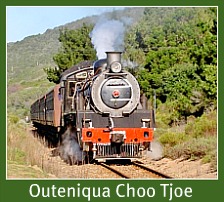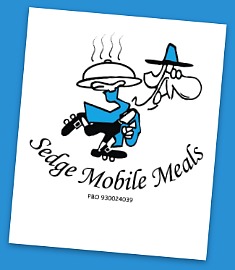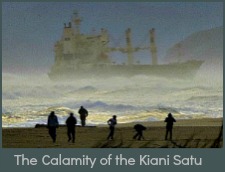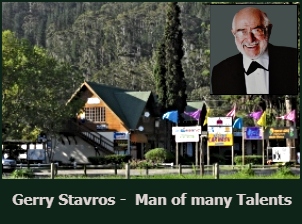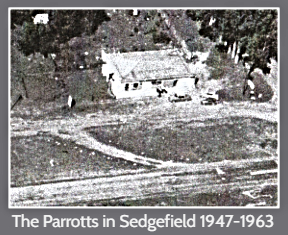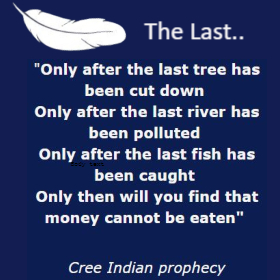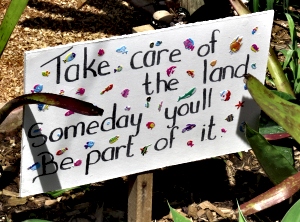Sedgefield History

When investigating Sedgefield history one finds that the area was first part of a larger farm called Ruigtevlei and that a German, Johann Friedrich Meeding born 4 November 1751 and his descendants, were destined to play an important role in its future.
In 1780, JF Meeding came to the Cape as a soldier, 29 years old, serving in the Dutch East India Company where he was placed in charge of a timber venture at Outeniquabosch situated on the banks of the Swart River not far from where it widened into the Swart Vlei. The following year he married Maria Martha Terblans and they raised a family of six children.
In 1787 Meeding was transferred to Plettenberg Bay where he continued uninterruptedly at his post during the British occupation in 1795 and again in 1806. He became one of the first Conservators of the forests between 1788-1811. He applied to go on pension but his request was refused by Lord Charles Somerset, the Governor of the Cape and he died there of asthma in 1813.
During his lifetime Johann Meeding made the effort to buy "grant of opstal" held by one Gerrit Bezuidenhout over Ruigtevlei. He paid £800 and received a receipt which he took to Cape Town to have the transaction registered, but as it was not completed before a Justice of the Peace, it was not considered vaild. However, after his death, Lord Somerset made a gift of the Ruigtevlei farm that included Swart Vlei and Groen Vlei, to his widow and the family moved from Plettenberg Bay to live there.
The Ruigtevlei and Groevlei Farms
When Maria died the eldest son, Johannes Jacobus Meeding, born on 21 September 1783, inherited the large farm and it reflects his name in the George records (see Sedgefield History tree) as owning Groenvlei and Ruigtevlei Farms. His marriage with Johanna Jacoba Sophie Campher produced two sons and seven daughters. It was the youngest daughter Catherina Dorothea and her children and grandchildren who were going to be linked with some exciting and colourful events in the vicinity of what would become known as Sedgefield.
In 1850, when Catherina was 24 years old, she accompanied her other unmarried sister, Anna and their parents, to see if they could assist with a rescue operation near the mouth of the Swart Vlei River where a ship had gone aground in a storm.
Catherina married Henry Hooper and often related the details of the shipwreck at Swart Vlei to her children. Her son, Johannes Jacobus Hooper, commonly called James, also told the story to his children, and some 76 years after the event, gave the Nepaul shipwreck story to the Knysna News whereupon it was put in print in their issue dated 5 March 1926.
James married Lulu Chartris. One day in 1876, while searching for stones to feed his ostriches, he unexpectedly found a gold nugget in the Karatara River. His find was confirmed by Mr. Osbourne, who at the time, was Thomas Bains' Inspector of Roads.
It was to spark the Millwood gold rush that reached its height in 1886. It was relatively short-lived as the reefs never delivered the expected results and attention was deflected from there by reports of high gold yields on the Witwatersrand. The Millwood goldfield proclamation was officially revoked in 1924.
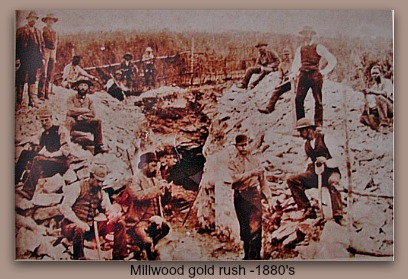
Johannes Jacobus Meeding had died in 1861, followed by his wife, Johanna 4 years later. It was in 1878, more than a decade after her death, before the large Ruigtevlei farm was divided into 9 lots, one for each of their children. They were then immediately transferred to their respective owners. Lots A and B would in time become, the town of Sedgefield. Only then does Sedgefield history begin.
Lot C was also destined to be part of Sedgefield History. It was inherited by Catherina and upon her death by her eldest son, James and eventually split between his 2 sons, Chartris and Humphrey.
Chartris Hooper's Inheritance-Part of Lot C
Chartris's property consisted of two parts, Milkwood Downs and Dixon Green where Chartris had a kind of hunting lodge and called it Hunter's Home.
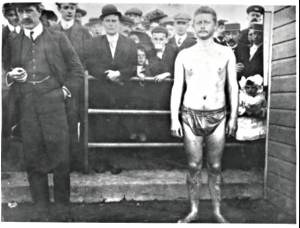 Henry Chartris Hooper after his Robben Island swim in 1909. Courtesy Cape Archives (Thank you Stuart Lidstone)
Henry Chartris Hooper after his Robben Island swim in 1909. Courtesy Cape Archives (Thank you Stuart Lidstone)He weekly swam the 4km length of Groenvlei and back before breakfast and was noted to have swum the distance between Platbank and Gericke's Point also! He officially made the record books by being the first person to swim from Robben island to the old Cape Town harbour in 1909. It took him 6 hours 55 minutes to swim the distance of about 11 km.
He never married and eventually sold his Sedgefield properties to Edmund Butler a house-painter from Oudtshoorn who sold them on to Percy Bredall in 1944.
Percy divided the land into 5-10 ha plots known as Lake Pleasant Estates. Hunters Home was subsequently upgraded to become Lake Pleasant Hotel.
It was leased out to Maj Puller and then the Parkers but Percy sold the hotel to Stanley and Bobby Vadas in 1962.
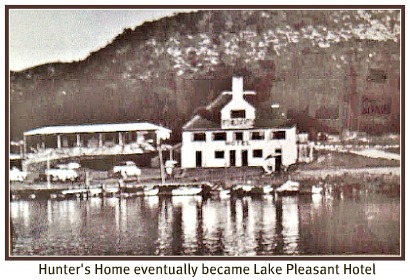
They upgraded it to a 2-star establishment that was well known the length of the Garden Route. Their son Peter and his wife, Vivienne assisted them for a while and then bought the hotel from them.
When Percy was killed in a car accident on his way home from Sedgefield village, a local Attorney, E.W Grunow with some experience of deceased estates, was in the right place at the right time to buy the shares/properties of Lake Pleasant Estates in May 1972.
Sedgefield history records that in July 1982 the name of the farm was changed from Ruigtevlei to the Remainder of Ruygte Valley No. 205 Knysna. It was subdivided into 45 smallholdings and one large section of 94,338 ha.
Although 20 of the 45 small-holdings had effectively been sold by Percy, the late E.W. Grunow was the major shareholder and had a controlling say in how the stands were developed. He lived in Bloemfontein from where he controlled and managed all his personal business affairs until he passed away at the ripe old age of 90.
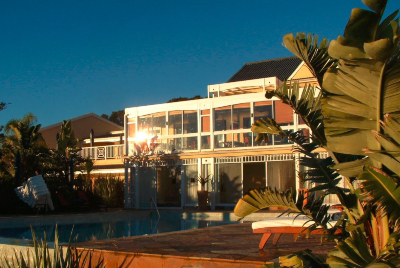 Lake Pleasant Hotel in early 2000s
Lake Pleasant Hotel in early 2000sIn September 1992, Lake Pleasant Hotel was sold by the Vadas (juniors) to a Rhodesian family, the Clintons. Paul Clinton kept 95% of the 20 staff members who had worked under the Vadas and determined to bring the 17 roomed hotel up to 3-star status by also introducing conference facilities.
Adrian Gardiner CEO of the Mantis Group, bought the hotel from the Clintons in 2000 and upgraded it to 5-star status. It's name was changed to Lake Pleasant Living. Unfortunately the hotel closed its doors in May 2016 and subsequently the self-catering units were made available for sale and as holiday rentals. As an example see, The Flamingo Suite.
It's once again active as Traders Hotel and has a restaurant that is open for breakfast and lunch and in the evening for special occasions. All the other facilities are being maintained plus hotel suites are again available for holiday accommodation.
Humphrey Hooper's Inheritance-Part of Lot C
Humphrey Hooper inherited the other portion of Lot C, Greenmere. He ran a successful Estate Agency business in Cape Town and has been described as "eccentric, in the nicest way"!
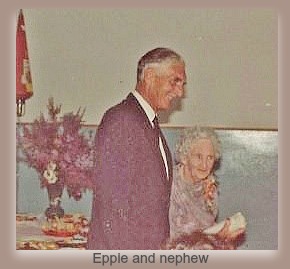
His sister Katherine, married Francis Edward Morris and one of her children was Ethel Florence Morris better known to the Sedgefield community as the irrepressible Eppie Hooper. She married Humphrey. They were first cousins. He was 57 years old and Eppie was 50 years old when they got married, beyond the age of having children.
They retired to Greenmere at Lake Pleasant in the 1950s. Eppie loved gardening and nurtured a magnificent rose garden there. They lived in a quaint little house with a lean-to kitchen built on by Humphrey and ran a small caravan park nearby. After Humphrey's death in 1961, Eppie sold the property to Rory (Pat) Hennessey in 1962 (but lived on in her house) and opened up her own Estate Agency in the village. A generous hearted well-loved character, Eppie passed away in 1984 at 92 years of age.
As it turns out, lines of both the Morrises and the Hoopers were descendants of the Meedings.
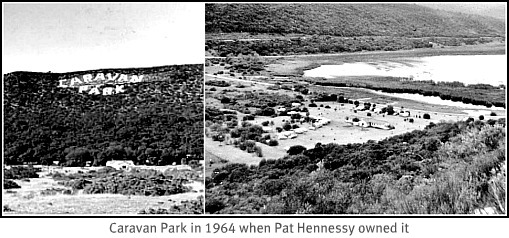
Pat Hennessey cleverly advertised the caravan park for all to see from the top of the dune above his Greenmere property. In December 1968, Roger Lidstone arrived off the Windsor Castle in Cape Town with his wife, Allannah and 3 children under 5 years of age. He bought a 50% share from his father-in-law, Pat who ran the accommodation side while Roger set up Sedgefield’s first supermarket for his own account, at Greenmere.
In 1973, Pat suffered a stroke and Roger bought the other 50% of Greenmere from him a short while after that. Pat passed away in 1977. The property was placed into the name of the Lidstone Family Trust in 1996. Roger passed away in Sep 2011 and his son, Stuart is the 3rd generation to run the popular chalet and campsite resort at Lake Pleasant.
Lots A and B
Lots A and B included the area that began where the Groenvlei property ended on the west side of the Groenvlei freshwater lake and ended on the west side of dune that overlooked Sedgefield running next to the Swartvlei and also ran behind the to the base of same dune. Records of Sedgefield history show that Lot A was transferred to Stephanus Barnard (1847-1944) and Lot B to PH Hildebrand. (see the Sedgefield History tree for clarity.)
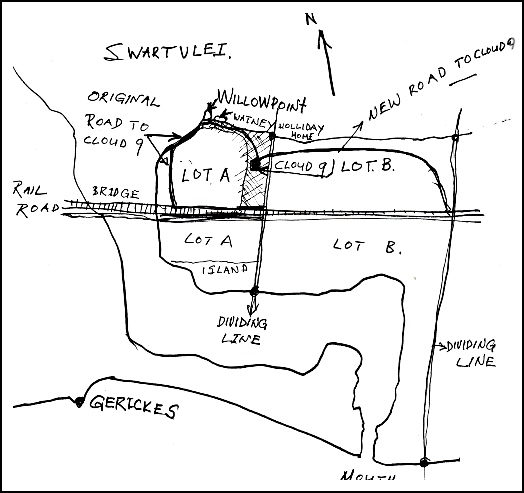 Map hand-drawn for me by Louis Bischoff when I asked if he knew the demarcations of Lot A and B. (not to scale)
Map hand-drawn for me by Louis Bischoff when I asked if he knew the demarcations of Lot A and B. (not to scale)One of Stephanus Barnard’s sons, Stephanus (Bvekenya) Cecil
Rutgert Barnard (1886-1962) born in Knysna, was a man of many talents
but notorious for his ivory poaching in the region of South Africa’s
border with Mozambique and Southern Rhodesia where he continuously
managed to evade the law.
Phillip Marnitz subsequently bought Lot A and B but didn’t own them for long either. In 1894 John Barrington bought the properties and named them Sedgefield in honour of his father’s birthplace in England, a village in the coal mining County of Durham.
July 2013 - A resident of the English Sedgefield has reliably informed me that his Sedgefield was never a mining town because miners couldn't get to the coal beneath a fault that ran on its northern side. However, the ugly evidence of the county's coal mining past such as the pit heaps are no more and the people are proud of the mining heritage.
John’s grandfather, George Barrington was 5th Viscount and Rector of the English village.
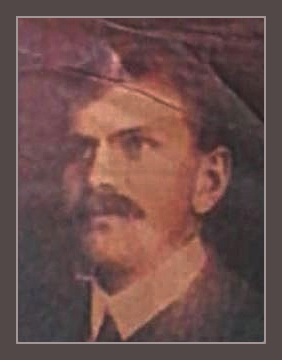 Thomas Dunbar Moodie
Thomas Dunbar MoodieSedgefield history did not evolve smoothly. In 1901, after John’s death, his sister Katherine Caroline Maurice (nee Barrington) inherited his property. She sold it to Salmon Terblans in 1911 for £2500.
In the early years of the 1900s, the only shop was Jan Sak's Cafe at the Karatara T-Junction. It also doubled as a butchery and Post office agency.
In 1922 a railway line was surveyed by Mr Dempster, the resident engineer in George, which was the largest settlement in the Garden Route region then. In 1924, construction started on the railway line. A major stumbling block was the difficult terrain and one particular railway bridge that had to be built to negotiate the Kaaimans River. That alone cost £66,000.
In 1926 Terblans gave Thomas Dunbar Moodie the assignment to survey and layout the plans for Sedgefield township.
The Railway Line
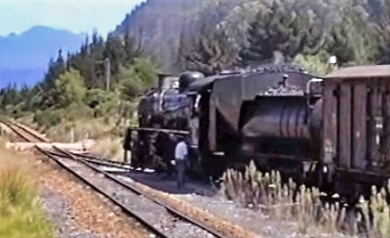 Sedgefield Siding before the platform was built
Sedgefield Siding before the platform was builtThe 76km line was completed in 1928 and in the same year the Thesens laid claim to Sedgefield when Terblans defaulted on a bond. The Norwegian Family was already well established in Knysna.
They had built the sawmills that enabled them to create their large wagon and
ship building businesses. They were also the main contributors of a small primary school for Sedgefield in
1921 supplying the building, desks and chairs.
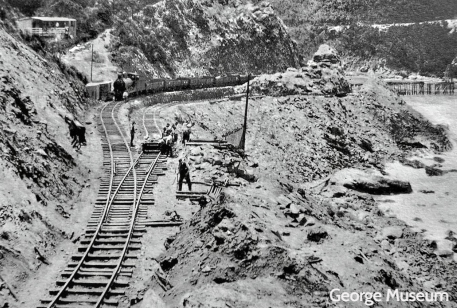 The construction site of the Kaaimans River Railway Bridge.
The construction site of the Kaaimans River Railway Bridge.The railway line was to make a noticeable contribution to Sedgefield history as it encouraged the gradual development and growth of the village by enabling people to get materials to the place more easily.
However, because there was no coastal road, Sedgefield was unknown to the outside world. Farmers in the surrounding hinterland were aware of it, because they had used the Swartvlei Camping site for over a century as an ideal spot for summer holiday vacations.
The Roads
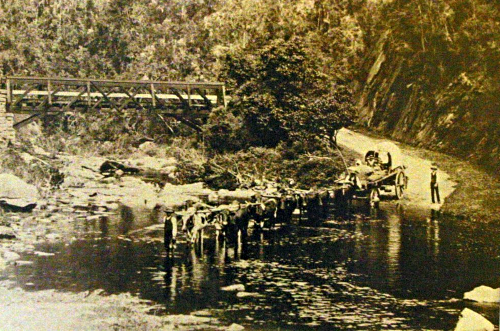 Ox Wagon crossing Kaaimansgat late 1800s.
Ox Wagon crossing Kaaimansgat late 1800s.Before the railway line, a camping site had been established by generations of farmers dating back to the early 1800's. They had traveled by ox wagon on rough rutted gravel roads from inland and up country to the little known seaside refuge to spend some summer weeks enjoying sand, sun, friends and family time on Swartvlei beach, on the shores of the estuary, and on beaches flanking the Indian Ocean. There was no visible place then called Sedgefield.
All the country folks needed, travelled with them. The loose mole infested sand was hard work for the oxen that also had to contend with swimming across the Swartvlei to get the wagons to the campsite.
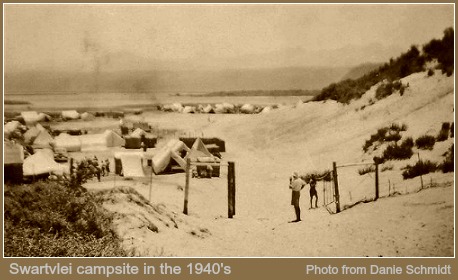
Nel Eatwell (nee Barnard) recalls memories of being just a little girl in the 1920's, travelling over a day’s journey by ox wagon from their farm inland at Elandskraal to Sedgefield where they would camp with other families.
There was a natural spring by the river mouth where they could collect brackish water that was palatable enough for drinking. In those days, the oxen were allowed to roam free opposite them on the island – now a popular residential area.
Once, sometimes twice a year, they would make this journey sleeping under the wagon for one night along the way, staying at the camp site for one or two weeks. It was a relaxing time for the hard-working farmers. They enjoyed the abundant fish catches in the lagoon and sea.
Time was spent too, socialising with friends and family. The trip was always a great adventure for the children and they reveled in carefree days playing together in the sand and sea and swimming in the lagoon. Although life was hard, they all savoured to the full, its simple pleasures.
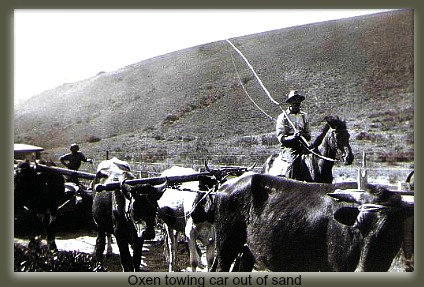
As a child, Eppie Hooper remembers visiting her mother (Kate) at her grandfather's (James) house near the entrance to Lake Pleasant. The best way to get there was by sleigh. Coastal roads were tracks of sand and wheels would sink into the dunes. Sleighs had rollers that would glide over the sand and could be pulled by donkeys. If they tipped over they could easily be righted. Their tracks came to be used by ox wagons and later still by horse drawn vehicles. It was the wagons that made the roads because otherwise, there were none.
Sedgefield history reflects that even when the Passes (dirt) road was built and people could come by car from the Knysna side, many times a team of oxen was called upon to pull out a vehicle stuck in deep sand.
Sedgefield History -Town Proclamation
In 1929 when Sedgefield was proclaimed a town, it was managed by the Knysna Divisional Council but as a dormant township there was not much to manage. At that time Mr. Bester was the secretary.
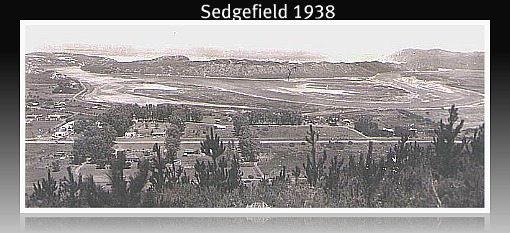
In the 1940s, the local shopkeeper, Mr. Muller also ran the village's postal service. The post was delivered by train and sorted into cupboard drawers in the shop for the small number of people to collect for themselves whenever they came to the shop.
Meat was delivered in similar fashion. It was ordered from George by phone and delivered by the train. The train driver would blow his whistle to warn everyone the train was arriving shortly so folks had time to get to the station to pick up their orders.
Sedgefield history indicates that to many, the hamlet at that time, was a mole and mosquito-infested vlei that suffered very cold wet winters. It was acceptable for short stretches as a summer vacation spot but it didn't have much to commend it as a permanent residential address!
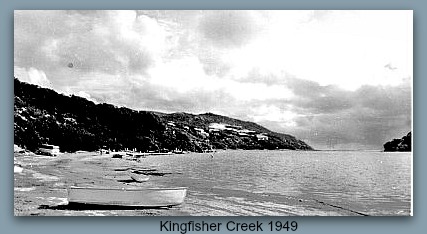
In 1948 the Thesens sold the long dormant township to entrepreneur, Blanckenberg (Blanco) Watney in the name of Sedgefield Investments (Pty) Ltd. He had come to George from Tzaneen a short while earlier with his wife, Elaine.
The land area comprised, from the bridge in the west to the dune overlooking Groenvlei in the east, from the sea in the south to the dune (and including it) now known as Cloud 9 in the north.
The village was still in its infancy consisting of a garage, a shop or two, the caravan and camping site owned by Alf Widman (where the P'nP complex is now) and a small number of simple residences. As there was no "main road" then, the few residences in the village faced the railway station with entrances facing George.
The Watneys built their own house, "The Bluff" on top of the west end of Cloud 9. It had panoramic views over the lakes and surrounding area but it was isolated and the road to reach it was awful. Blanco built it to get to the house in the first place and built the original road across the top of the dune that comes down on the east side of Sedgefield. When he died only a few years later in 1952, Elaine Watney took control of the township administration.
On advice from a "useless" lawyer she sold the 'unprofitable farmland' namely Steenbok Island to the dapper little Rhodesian dresser, Ferdie Van Niekerk, who made a bunch of money slicing it up into stands and selling them off for housing. (Blanco had been keen to grow crops on it.)
It was a flood plain but no-one was paying attention to a tiny half-formed village that was in the middle of nowhere and nowhere on any map of the area. Ferdi got away with it but before there were many buildings upon it Sedgefield experienced serious flooding in December 1952 and again in June 1953. Another flood cut the Island off from Sedgefield in 1981 and dead animals including ostriches from up country farms came down the river and ended up on the beach. It was the second time Swartvlei floodwater had reached over the railway line.
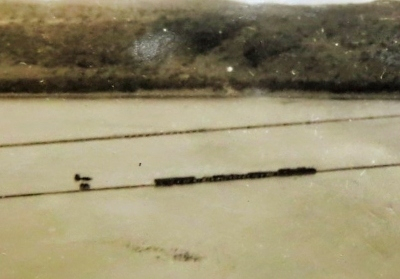 Train crossing over the Swartvlei on a flooded railway line Dec. 1952-Photo taken from the Watney's house on Cloud 9. The new road was barely above water.
Train crossing over the Swartvlei on a flooded railway line Dec. 1952-Photo taken from the Watney's house on Cloud 9. The new road was barely above water.Elaine bought “Aqua Vista” the home of school teacher, Jacob Muller (cnr Flamingo Road and Kingfisher Drive) enabling her to move into town. She changed the name to Sandgate.
The completion of the coastal road between George and Knysna in 1951 had an immediate effect on Sedgefield simply because of the ease of access it gave to the village and because now, it was travelled through, travelers became aware of it. People could visit friends there more easily too. The little hamlet was still slow to awaken much interest unless you knew someone who lived there. (Even 20 years ago one would barely ever see Sedgefield mentioned anywhere as a tourist destination.)
A small Village Board was formed to attend to local matters but they did not have much power. In 1956 a local Village Management Board was created. Sedgefield sent representatives to the council meetings, one being Boet Smuts who took a keen interest in the welfare of the village. Smutsville was named after him. He initiated the project by building 2 houses for the coloured people and then the Management Board added 30 more.
Sedgefield history indicates that conditions remained primitive for many years. Wells supplied water. Oil lamps and candles supplied light. Wood-stoves were the cookers. Then small generators were introduced and water pumps could be used to draw up borehole water.
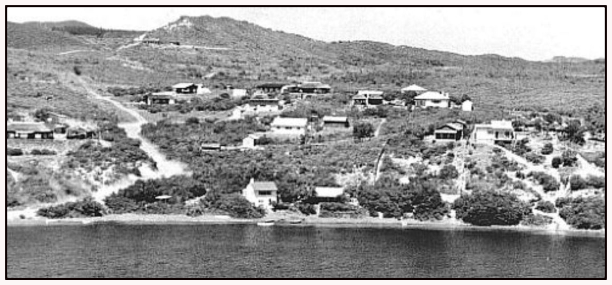 Sedgefield Houses overlooking Kingfisher Creek in 1960s.
Sedgefield Houses overlooking Kingfisher Creek in 1960s.For nearly 40 years, the Knysna Divisional Council administered Sedgefield.
However, by 1962, together with a sizable donation from Elaine Watney, the local Women's Work Party had raised sufficient funds to build the JGB Watney Memorial Library in honour of Elaine's husband. By 1967, the community had raised enough funds to build the Sedgefield Christian Community Church.
A Junior school was established, a town hall, a chemist and shops gradually formed a town centre providing adequately for the daily requirements of the town's inhabitants.
It was Knysna's Divisional secretary, Mr. Squire that guided the formation of the Sedgefield Management Board.
On 6 November 1967, the first 6 members of the local board were elected. They were Mr. E.H. Denyssen (owner of Placid Waters), Mr. H.M. Dersley, Mrs. Elaine Watney, Mr. A.F. Swartz, Mr. E.R. Pienaar and Dr. Nellie Downes. On 21 November 1967 the board elected Mr.Denyssen as Chairman and Mr. Dersly as Vice- chairman.
In 1970, Sedgefield formed it's own theatre group, the Sedgefield Players. Gradually the village's infrastructure grew to support the increasing number of residents discovering Sedgefield. In 1974, the town attained municipal status. Dr Nellie Downes became the town's first Mayor. Sedgefield finally got on the national electricity grid in 1979.

In 1987-1988 land on Steenbok Eiland now known as The Island was set aside for a community sports club by local mayor, Reg Basson. The Club House and Hall were built first and the first bowling green was opened on 23 September 1990. The Sedgefield Art Society was created in 1992.
In the "new" South Africa, due to the political strategies of the ANC government, Sedgefield lost its autonomy and the positive bank balance it had at the time disappeared into the coffers of Knysna Municipality. Now, instead of appointing the best people to do the jobs regardless of their political persuasion, all appointments have become political which has resulted in mismanagement, uncontrolled corruption and total lack of accountability all of which has seriously affected service delivery in most of the municipalities throughout South Africa.
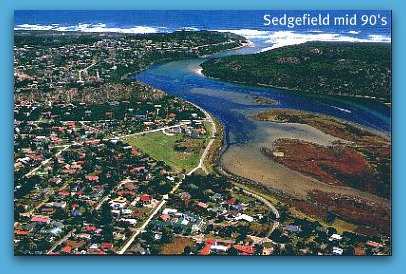
In 2020 Sedgefield this laid back village was 90 years old. I first wrote this page in 2010 saying the village still retains the essential character of its early humble beginnings but regretfully this is changing. Knysna Municipality is being battered and perhaps bribed (when I see all the restraints being relaxed) by demands from property developers and estate agents to pass plans that exceed recommended sustainable environmental guidelines.
In spite of attaining the status of Garden Route Biosphere Reserve, conservation and environmental considerations are not evidently on these people's radar. A rare and beautiful natural kingdom is being suffocated and irreparably destroyed by humanity's ever-expanding and ceaseless demands on it. Once lost, it cannot be recovered. Fresh water is the most critical consideration for the area along with the disposal of effluent and it's being ignored by those touting development. Short term gains for long term losses. The reality is in a very short space of time the Garden Route will just be a name of historical reference, nature's garden will no longer exist.
Acknowledgements and my grateful thanks to the following:
Stuart Lidstone for a wealth of information
Bewaardes van ons erfenis Distrik George Deel 8 (In Sedgefield Library)by JG le Roux, J.J. Niemandt, Mariana Olivier - 2003
The Sedgefield Saga - Louis Bischoff
The Knysna and Tsitsikamma Forests - Chief Directory Forestry
The Late Wynne Humphries
Knysna Tourism I Course
Joyce Hampson
Nel Eatwell
Gerry Stavros
Ensle Syphus' notes and interviews with locals

